Common Long-Horned Bee
Forked Bluecurls
Forked Bluecurls, Trichostema dichotomum, are native to Florida and a member of the mint family. Bees and other pollinators are attracted to their aromatic blue-violet flowers. They are often found in thickets and dry pinelands. Look for blooms in August and September.
Because they propagate easily from seeds, Forked Bluecurls will thrive in your wildflower garden and may need to be controlled to leave room for other wildflowers.
Southeastern Blueberry Bee
Here’s something to buzz about. These Southern Blueberry Bees (Habropoda laboriosa) use a technique called “buzz pollination,” in which their buzzing allows tightly held pollen on the anthers of rabbiteye blueberries to loosen. These bees are most active in spring and are easily recognized by their large size and loud buzzing. Of course, they don’t just eat blueberry pollen. Here they are on some scarlet milkweed. You can attract these and other native bees by using native flowering plants in your landscaping.
Leavenworth’s tickseed
Leavenworth’s tickseed Coreopsis leavenworthii
The Leavenworth’s tickseed is an endemic flower that provides food for several pollinators. It can usually be found in pine flatwoods where the soil is dry but can adapt to other regions. Here we have pictures with a species of fruitfly, Dioxyna picciola, and a Green sweat bee, Agapostemon splendens. Most flowers are produced in spring but flowers can be found year-round. Have you spotted these beauties anywhere around the state?
Southern Carpenter Bee
What could be nicer than a native pollinator and a native flower? This Southern Carpenter Bee (Xylocopa micans) is stopping by flowering pennyroyal (Piloblephis rigida). The carpenter bee is a solitary bee that lives for one year. They nest in the wood of dead trees. Like other pollinators, carpenter bees are important to the survival of many species of plants. Pennyroyal is a member of the mint family and can be found in sunny areas of sandy soil along forest edges. It can be brewed into a tea as well.

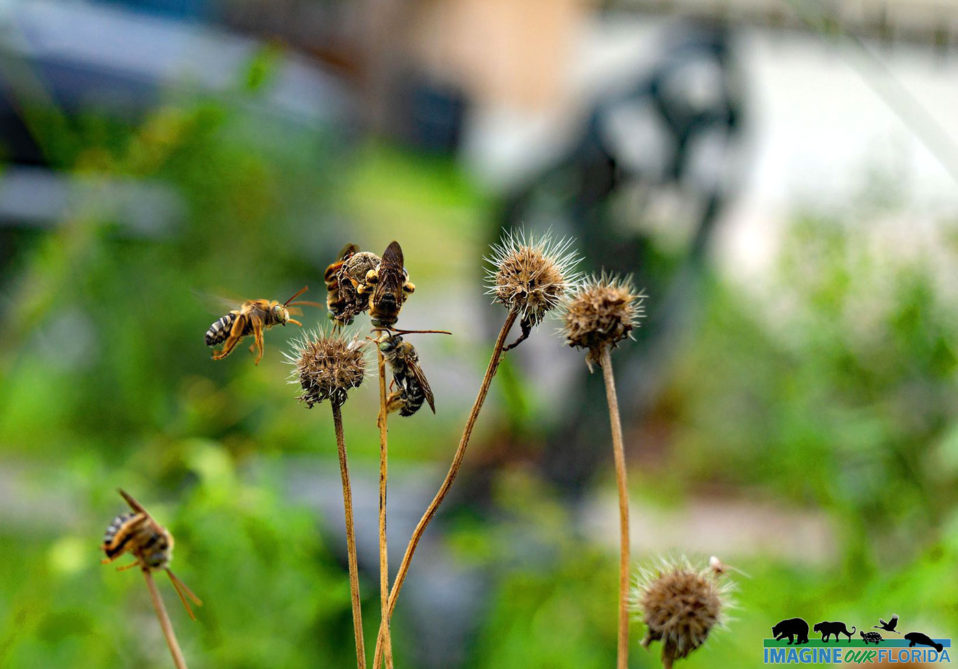
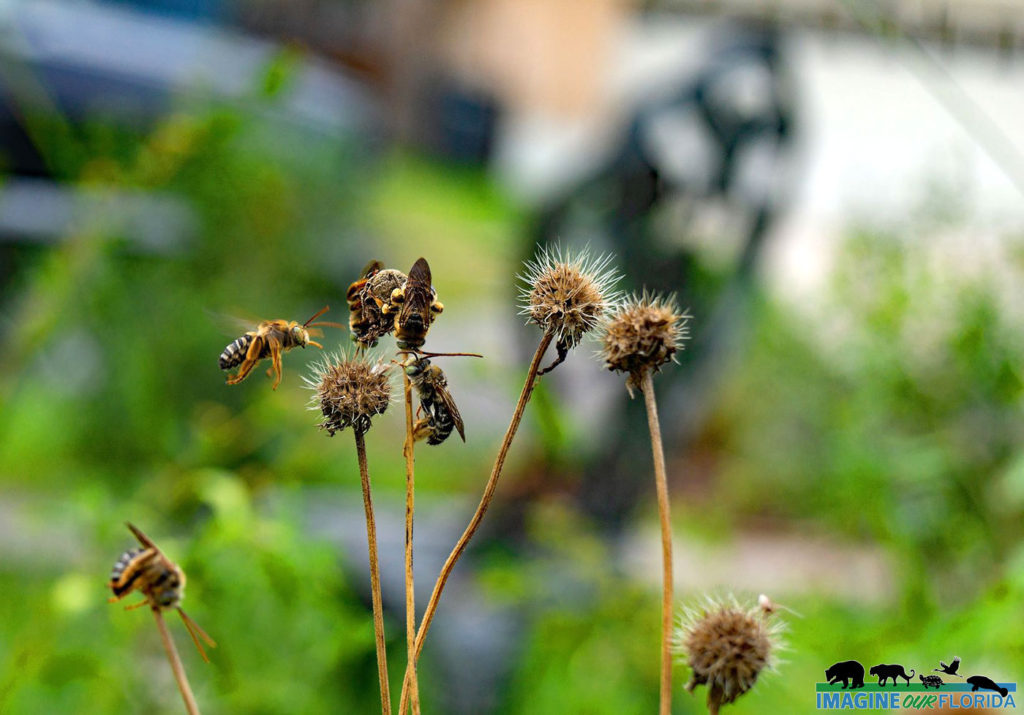
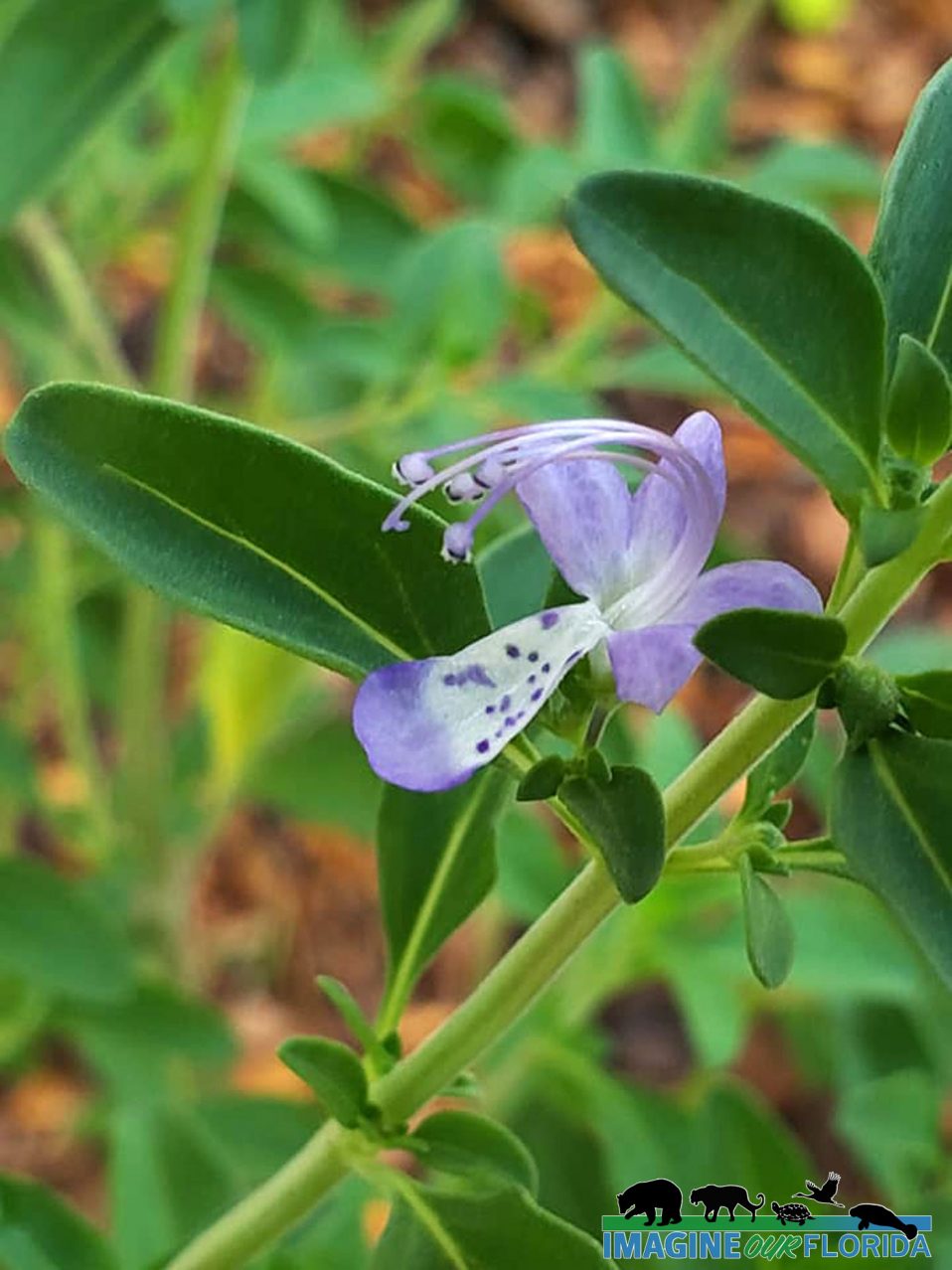
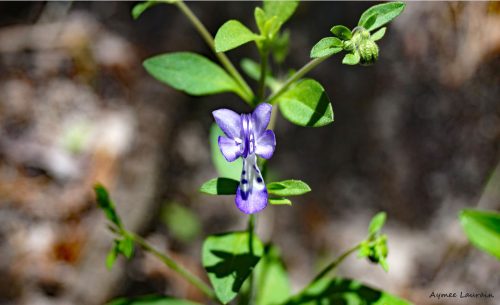
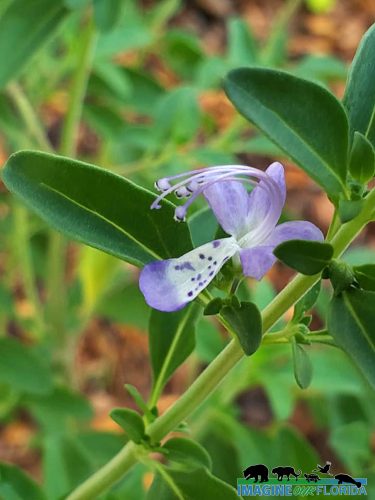
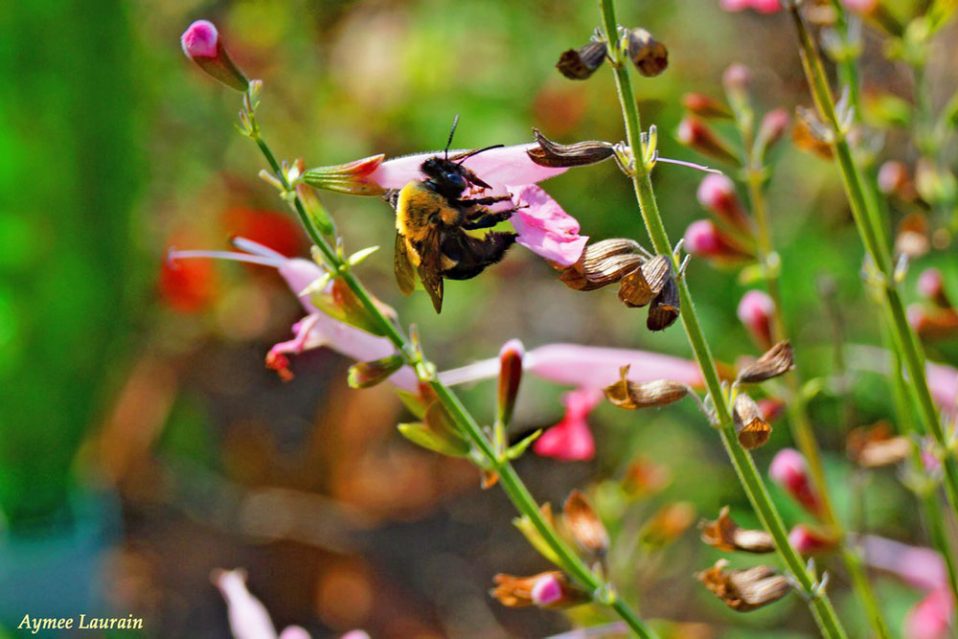
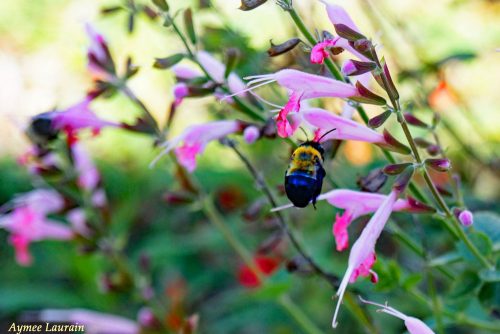
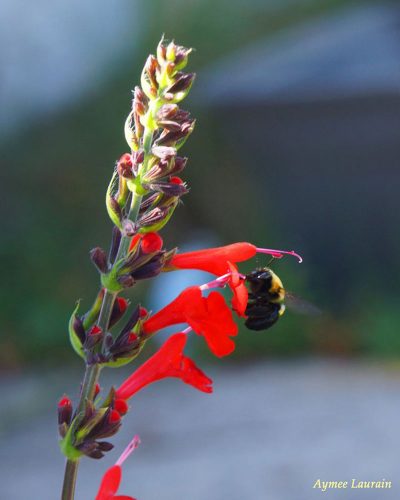
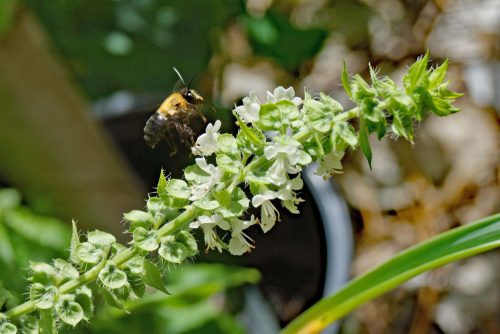
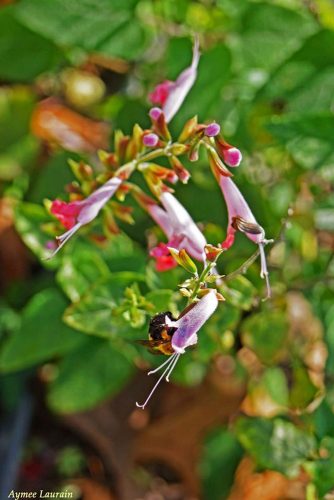
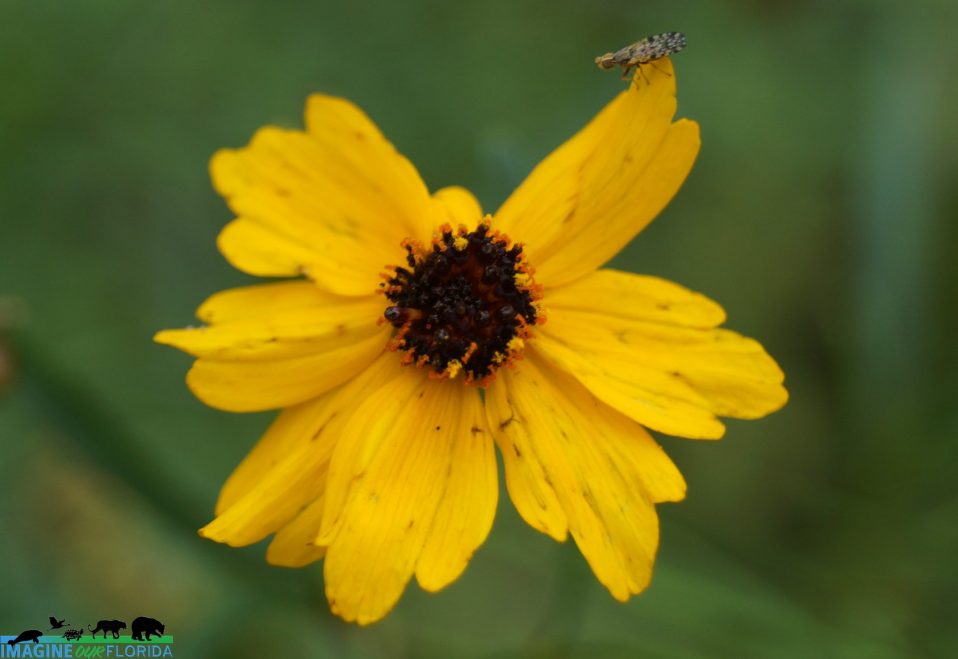
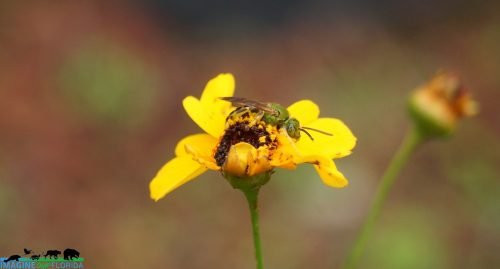

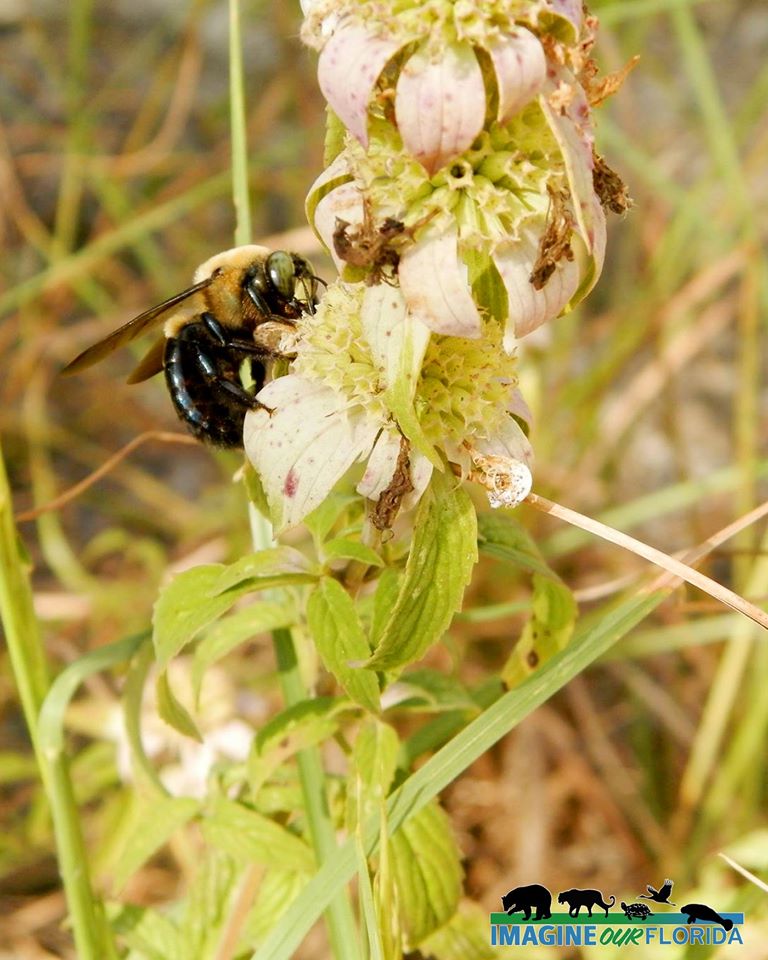
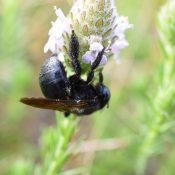
Recent Comments